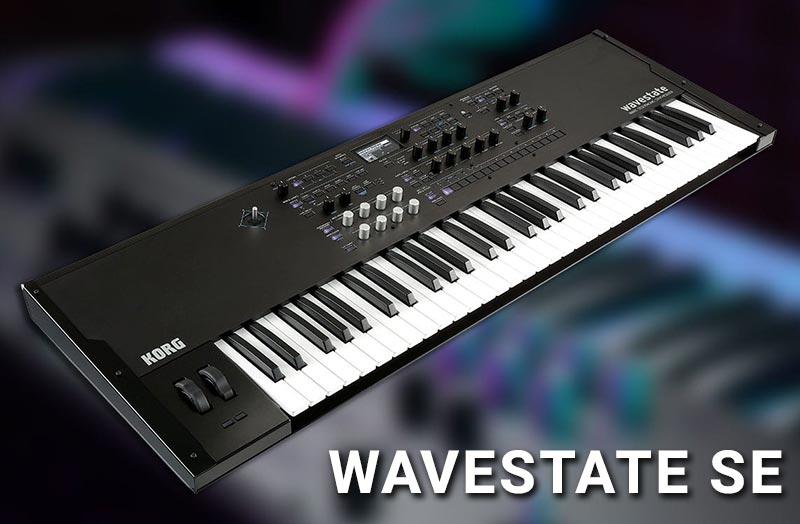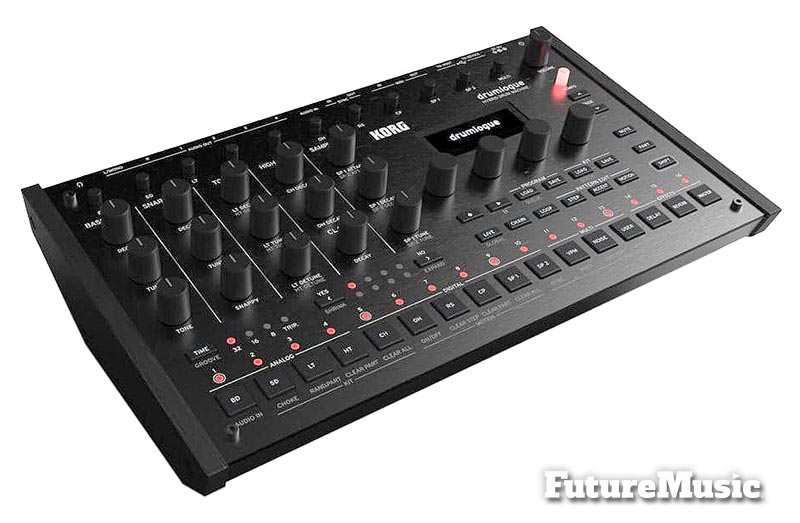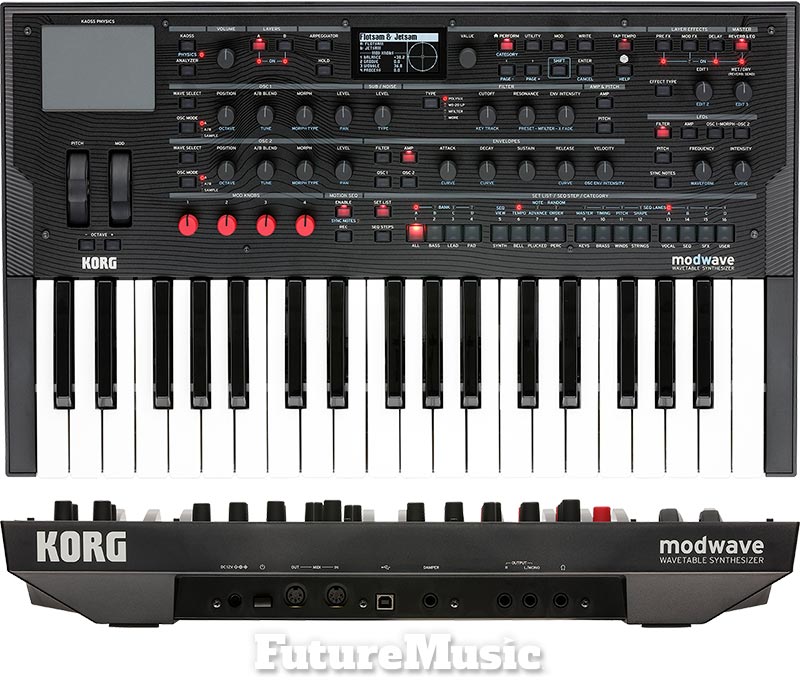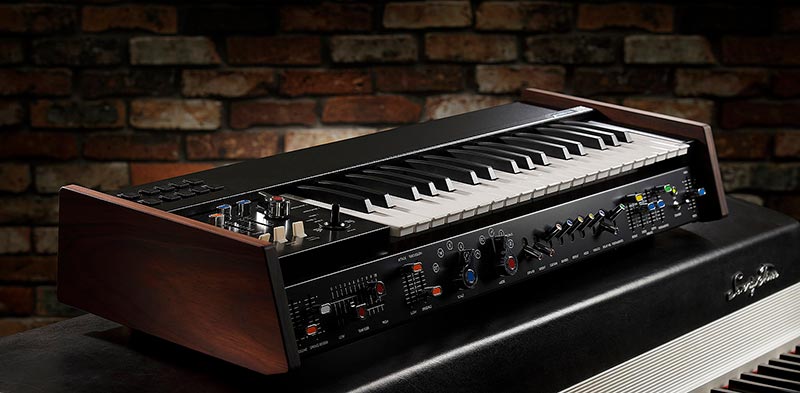Long gone are the days of adding a tube to an Electribe and calling it a day, Korg has just been killing it as of late with a slate of new products that are pushing the envelope of music technology, reimagining legacy products and downright inspiring a new generation of musicians who are confined to their studios during Covid19. Unlike their main Japanese competitor, Korg has chosen the NAMM show to reveal several exciting new synthesizers and a new take on the traditional drum machine. Let’s get to it…

For a limited time only! Up to 80% off all Waves Bundles. PLUS use Waves promo code “CK901” for an additional 10%! This is Waves best deal yet! Get yours today before this special ends! GO!

Let’s just get this announcement off of our plate first. Korg unveiled the Korg Wavestate SE, a 61 key version of their wave sequencing synth that came out last year. Beyond the addition of a couple more octaves, the SE adds aftertouch, more sounds and premium components, including an aluminum chassis and knobs. While we believe our audience would have preferred a desktop module instead of an expanded keyboard, the Wavestate SE does appeal to keyboardists who felt limited by the original’s keyboard size. Hopefully, Korg will debut a desktop version in the near future.
Korg Drumlogue

Of all the product announcements, Korg had the least say about the Drumlogue and pushed it off to a Future Products microsite. However, they did say the new drum machine is an analog and digital hybrid that features sampling, analog synthesis and the ability to customize the oscillators. The multitude of knobs allow for quick editing of parameters as well as plenty of action for live-performance tweaking. Korg will provide a dedicated librarian component for easy patch and sequence management, and it will support Korg’s -logue SDK Multi-Engine plug-in oscillators for user modifications.
From the images, it appears to be quite well-built, yet compact. Unlike the Roland TR-6S, it contains a stereo pair output, plus four individual outputs, a headphone output, MIDI in/out and SYNC in/out. No pricing or availability has been announced.
Korg Modwave
Korg DW-8000 Reimagined
Korg debuted the DW-8000 in 1985. It combined digital wavetables with analog filters to give musicians unique sounds which were impossible to create with analog oscillators alone. Korg’s modwave builds on the DW-8000’s foundations and transforms it into a modern synth, featuring deep wavetable oscillators, filters, flexible modulation, polyphony, pattern sequencing, and hands-on control.
The Modwave also introduces two new tools for creating dynamic motion: Kaoss Physics and Motion Sequencing 2.0. Kaoss Physics combines an x/y Kaoss pad with modulatable game physics to create a responsive, interactive controller. Motion Sequencing 2.0 brings the organic, continuously evolving patterns of the Wavestate’s Wave Sequencing 2.0 into the world of motion sequencing, including multiple lanes and real-time recording to help you create complex and evolving phrases.
Modwave’s reborn wavetable synthesis delivers its own brand of provocative sounds and a knob-per-function layout that makes customizing those sounds fast and easy. To start, there are hundreds of preset sounds empowered by this new architecture, organized by front-panel category buttons, and all instantly customizable via the four Modulation Knobs. Modwave’s distinctive wavetable timbres start with basses & leads, and ambient pads, but for those who want to dig deeper, you can get under the hood to explore the synth’s unique sonic architecture.
The Modwave also employs the MS-20’s Lowpass and Highpass filters, as well as the Polysix’s Lowpass, all newly enhanced with gain controls to make it easier to dial in the resonance timbre. Explore even more modulation possibilities with a full collection of resonant 2-pole and 4-pole Lowpass, Highpass, Bandpass, and Band Reject filters, as well as Korg’s Multi Filter, which creates modulatable blends of multiple modes simultaneously.

The Modwave’s built-in effects are based on a Layer methodology. Each Layer has three dedicated effects, plus a send to the Performance’s master reverb, followed by a master parametric EQ. Along with standards such as compressors, EQs, choruses, flangers, phasers, and stereo delays, you’ll find proprietary processors such as the Wave Shaper, Talking Modulator, Reverse Delay, Multiband Mod Delay, and Overb (based on the technology from the OASYS and Kronos workstations), plus modeled effects including VOX guitar amps, VOX wah, multi-head tape echo, and a collection of classic guitar pedals.
Motion Sequencing 2.0 is based on the Wavestate’s Wave Sequencing 2.0. Timing, Pitch, Shape, and four sets of Step Sequence values are separated into Lanes, each with their own loop start and loop end, adding a deeper, more customizable level of phrase and modulation recording. Every time the sequence moves forward, the individual Lanes are combined to create the output. For instance, a step sequence value may be matched with a different duration, pitch, and shape every time that it plays. You can modulate each Lane’s loop points separately for every note, using velocity, LFOs, envelopes, Mod Knobs, or other controllers. For instance, each note in a chord can be playing something different. Lanes can also randomize the step order every time they play. Finally, individual steps can be randomly skipped, with a modulatable probability from 0 to 100%. The dual onboard arpeggiators can interact with Motion Sequences for even more possibilities.
miniKORG 700FS
miniKORG 700S Part Deux
The miniKORG 700 was Korg’s first mass-produced monophonic synthesizer released in 1973. After a lot of experimentation, the miniKORG 700 arrived bringing the world of synthesizers to a mass audience of keyboardists by offering simple operations that could a variety of new exciting sonics. It was followed up by the miniKORG 700S, an improved version.
The miniKORG 700FS is an authentic revival of the miniKORG 700S with some added features including an arpeggiator, spring reverb and aftertouch. To realize the modern version, Korg reached out to Fumio Mieda, the original designer for his input on this limited-edition analog synthesizer. While the miniKORG 700 was Korg’s first synthesizer, it also produced some of the fattest and most dense sounds of Korg’s synthesizers to date. The miniKORG 700FS, features oscillators with a penetrating sound and an authentic recreation of the Traveler controller, one of the key features of the miniKORG 700.
So what’s up with all the controls underneath the keybed? The concept behind the miniKORG 700 was to utilize it as a “sub keyboard” that players would set atop their organs (frequently used in the 1970s) to augment the organ’s sound palette. The controls on the miniKORG 700 were laid out below its keys in a row, so that players who set the instrument on top of their organ would find them easy to access. Even today, this layout is intuitive and easy to understand, with a unique look that no other instrument offers. To that end, the lead synth sound of the miniKORG 700FS works well with stage keyboards such as or electric pianos, organs and more.







